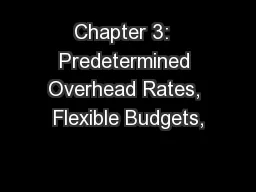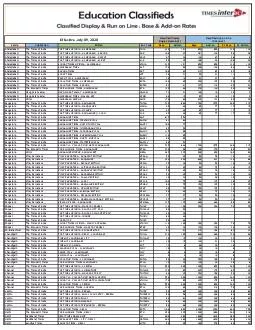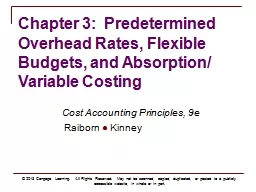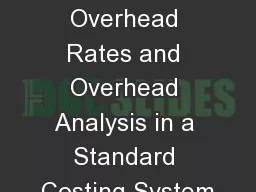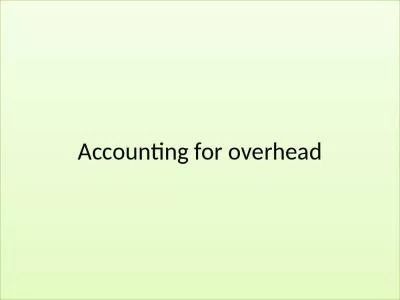PPT-Chapter 3: Predetermined Overhead Rates, Flexible Budgets,
Author : lindy-dunigan | Published Date : 2016-12-02
Cost Accounting Foundations amp Evolutions 9e Kinney and Raiborn Learning Objectives Why and how are overhead costs allocated to products and services What causes
Presentation Embed Code
Download Presentation
Download Presentation The PPT/PDF document "Chapter 3: Predetermined Overhead Rates..." is the property of its rightful owner. Permission is granted to download and print the materials on this website for personal, non-commercial use only, and to display it on your personal computer provided you do not modify the materials and that you retain all copyright notices contained in the materials. By downloading content from our website, you accept the terms of this agreement.
Chapter 3: Predetermined Overhead Rates, Flexible Budgets,: Transcript
Download Rules Of Document
"Chapter 3: Predetermined Overhead Rates, Flexible Budgets,"The content belongs to its owner. You may download and print it for personal use, without modification, and keep all copyright notices. By downloading, you agree to these terms.
Related Documents

